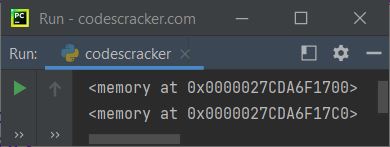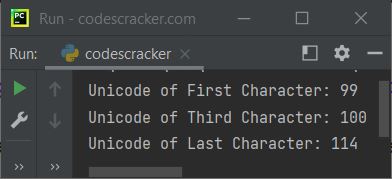- Python Built-in Functions
- Python All Built-in Functions
- Python print() Function
- Python input() Function
- Python int() Function
- Python float() Function
- Python len() Function
- Python range() Function
- Python str() Function
- Python ord() Function
- Python chr() Function
- Python ascii() Function
- Python pow() Function
- Python type() Function
- Python List Functions
- Python list() Function
- Python insert() Function
- Python append() Function
- Python extend() Function
- Python pop() Function
- Python remove() Function
- Python reverse() Function
- Python sort() Function
- Python sorted() Function
- Python Dictionary Functions
- Python dict() Function
- Python update() Function
- Python get() Function
- Python keys() Function
- Python setdefault() Function
- Python fromkeys() Function
- Python items() Function
- Python popitem() Function
- Python Tuple Function
- Python tuple() Function
- Python Set Functions
- Python set() Function
- Python frozenset() Function
- Python String Functions
- Python split() Function
- Python join() Function
- Python format() Function
- Python replace() Function
- Python Iterator Functions
- Python iter() Function
- Python min() Function
- Python max() Function
- Python sum() Function
- Python count() Function
- Python index() Function
- Python copy() Function
- Python clear() Function
- Python next() Function
- Python filter() Function
- Python enumerate() Function
- Python zip() Function
- Python reversed() Function
- Python Number Functions
- Python abs() Function
- Python bin() Function
- Python oct() Function
- Python hex() Function
- Python round() Function
- Python divmod() Function
- Python complex() Function
- Python File Handling Functions
- Python open() Function
- Python read() Function
- Python readable() Function
- Python readline() Function
- Python readlines() Function
- Python write() Function
- Python writable() Function
- Python writelines() Function
- Python close() Function
- Python seek() Function
- Python tell() Function
- Python flush() Function
- Python fileno() Function
- Python truncate() Function
- Python Class Functions
- Python object() Function
- Python property() Function
- Python getattr() Function
- Python setattr() Function
- Python hasattr() Function
- Python delattr() Function
- Python classmethod() Function
- Python staticmethod() Function
- Python issubclass() Function
- Python super() Function
- Python Misc Functions
- Python all() Function
- Python any() Function
- Python isatty() Function
- Python bool() Function
- Python callable() Function
- Python globals() Function
- Python locals() Function
- Python dir() Function
- Python id() Function
- Python isinstance() Function
- Python map() Function
- Python repr() Function
- Python slice() Function
- Python vars() Function
- Python Advance Functions
- Python help() Function
- Python hash() Function
- Python breakpoint() Function
- Python bytes() Function
- Python bytearray() Function
- Python memoryview() Function
- Python compile() Function
- Python eval() Function
- Python exec() Function
- Python Tutorial
- Python Tutorial
- Python Examples
- Python Examples
Python memoryview() Function
The memoryview() function in Python returns the memoryview object from a specified object (byte or bytearray). For example:
x = memoryview(bytes("Python", "utf-8")) print(x) x = memoryview(bytearray("Python", "utf-8")) print(x)
The snapshot given below shows the sample output produced by above Python program, demonstrating the memoryview() function:

Note: To learn about memoryview object, refer to its separate tutorial.
Python memoryview() Function Syntax
The syntax of memoryview() function in Python is:
memoryview(obj)
where obj is an object of either bytes type or bytearray type.
Python memoryview() Function Example
Here is a simple example of memoryview() function in Python. This program initializes a bytes type to a variable x, then the variable gets converted into memoryview, to print the Unicode of particular character using index:
x = bytes("codescracker", "utf-8") x = memoryview(x) print("Unicode of First Character:", x[0]) print("Unicode of Third Character:", x[2]) print("Unicode of Last Character:", x[len(x)-1])
Here is its sample output:

Here is the actual example, that shows why memoryview is useful to optimize the program in Python:
import time n = 400000 data = b'a' * n start = time.time() while data: data = data[1:] tm = time.time() - start print("Time taken for", n, "iterations (without memoryview):", tm, "sec") n = 400000 data = b'a' * n data = memoryview(data) start = time.time() while data: data = data[1:] tm = time.time() - start print("Time taken for", n, "iterations (with memoryview):", tm, "sec")
The sample output of this program, is shown in the snapshot given below:

« Previous Function Next Function »